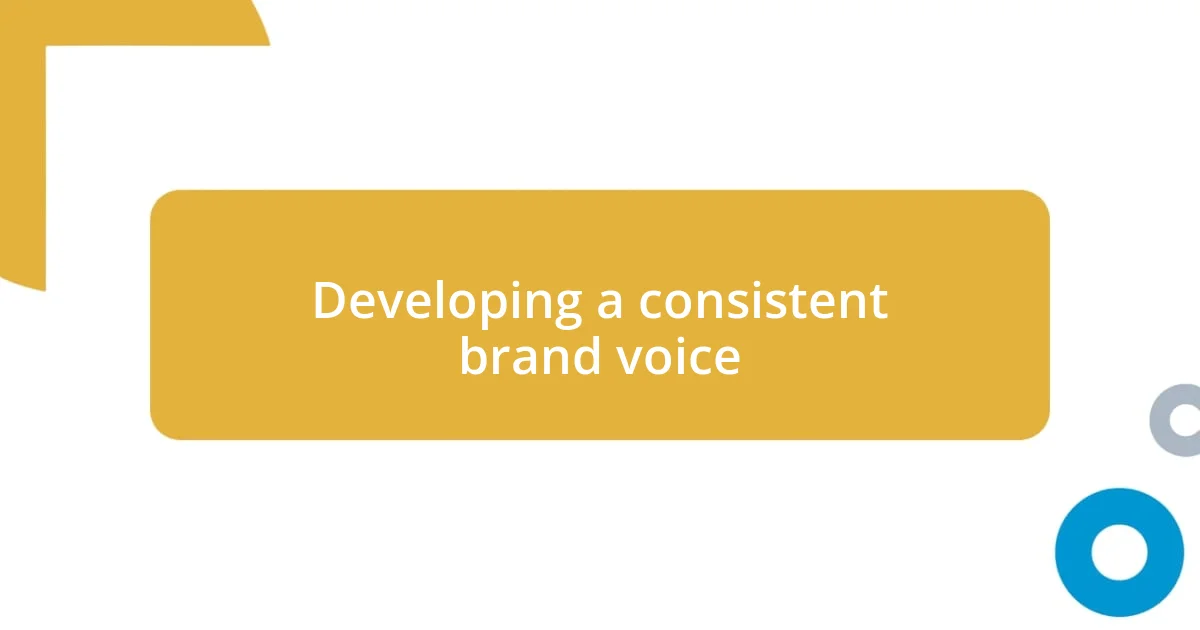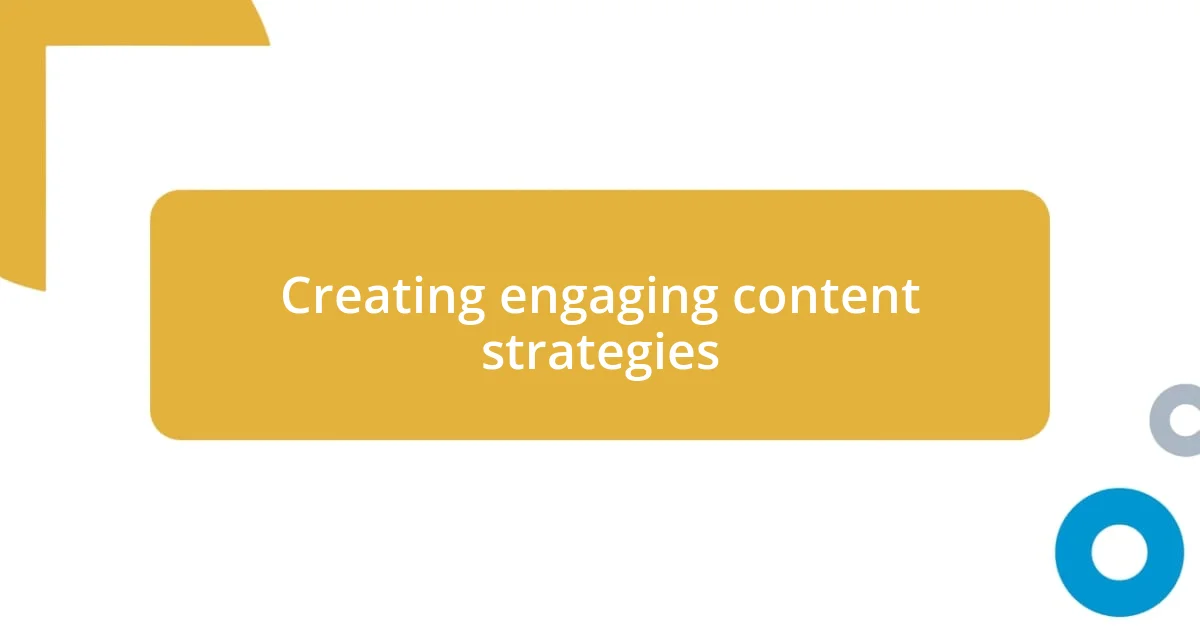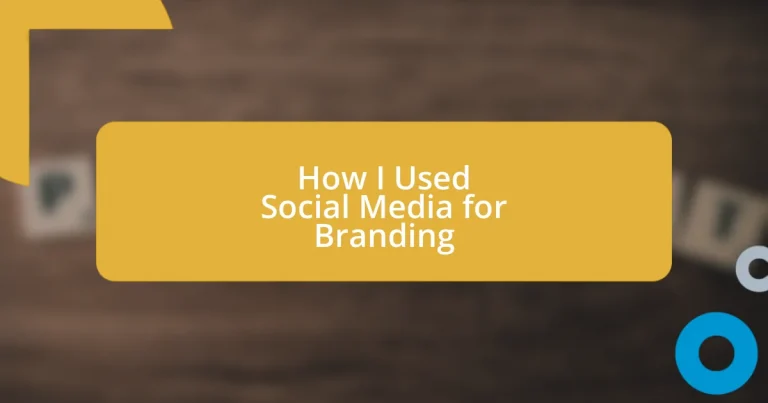Key takeaways:
- Social media serves as a powerful tool for brand communication, fostering genuine connections and understanding audience needs through engagement.
- Selecting the right social media platforms is crucial, as each has its own unique audience and style that can enhance brand visibility and authenticity.
- Consistency in brand voice and measuring engagement metrics are essential for building trust, refining strategies, and ensuring content resonates with the audience effectively.

The importance of social media
Social media is crucial in today’s digital landscape, serving as the heartbeat of brand communication. I remember a time when I posted a seemingly simple update about my product launch; the engagement was overwhelming! Suddenly, people I hadn’t spoken to in years reached out, curious and supportive. It struck me how social media creates a dialogue that previously felt unattainable.
Moreover, it acts as a window into the brand’s personality. I often share behind-the-scenes stories and candid moments, which have helped to humanize my brand in a way that static ads never could. This authenticity resonates with my audience, sparking genuine connections. Have you found that personal touch to be effective in your branding strategy?
Think about the rolodex of social connections we all have at our fingertips. Social media exponentially expands reach; it enables brands to tap into diverse audiences across the globe. When I crafted targeted campaigns, the insights I gained were invaluable, leading to a deeper understanding of my audience’s needs and preferences. I often wonder, without social media, would my business be where it is today?

Choosing the right platforms
Choosing the right platforms for branding feels like a delicate balancing act. Each social media channel has its own personality, culture, and audience. For instance, I found that LinkedIn worked wonders for my professional networking, while Instagram allowed me to showcase my products in a visually striking way. Experimenting with different platforms revealed where my brand truly flourished, making the decision feel less daunting.
Here’s a quick guide to help you discern which platforms might be best for your branding needs:
- Instagram: Great for visual storytelling; ideal for lifestyle and product-heavy brands.
- LinkedIn: A must for professional services and B2B branding; it fosters credibility and expertise.
- Facebook: Offers versatility; good for community building and customer engagement.
- Twitter: Best for real-time communication and news sharing; perfect for brands with fast-paced content.
- TikTok: Explosive growth; works wonders for creative and fun content aimed at younger audiences.
By aligning your content goals with the right platform, I believe you’ll cultivate a more authentic connection with your audience. Trust me, the right choice can truly amplify your brand’s voice!

Developing a consistent brand voice
Developing a consistent brand voice is vital for building recognition and trust with your audience. When I first started, I didn’t realize how crucial it was to maintain a signature tone across all my posts. However, I learned that whether I was sharing a lighthearted meme or a serious business update, the way I communicated needed to reflect my brand’s core values. It should evoke an emotional response—something that my audience could resonate with. For instance, during a campaign promoting sustainability, I used warm, empathetic language that connected my mission with their values.
As I refined my brand voice, I noticed how it shaped my interactions. Every comment, reply, and post became a reflection of who I was as a business. Personally, I find that consistent messaging creates a sense of familiarity, drawing my audience closer. After implementing a playful tone in my social media posts, engagement skyrocketed, and my followers began to see me not just as a brand, but as a friend. Isn’t it amazing how a few simple tweaks can lead to such significant results?
To illustrate the differences that tone can make, here’s a comparison table of various brand voices I’ve encountered:
| Brand Voice | Example Tone |
|---|---|
| Professional | Formal language, industry-specific jargon; conveys expertise. |
| Friendly | Casual language, conversational style; builds rapport and trust. |
| Playful | Humorous and fun; engages a younger audience and creates excitement. |
| Inspirational | Uplifting and motivational; creates an emotional connection and drives action. |
In crafting my brand voice, I think about how I want my audience to feel when they interact with my content. The reality is, your distinct voice can set you apart in a crowded digital landscape. It’s all about authentic representation that resonates with your audience.

Creating engaging content strategies
Creating engaging content strategies involves a deep understanding of your audience’s preferences and behaviors. I remember when I launched a series of interactive polls on Instagram Stories; the responses opened up a fascinating dialogue with my followers. This interaction not only boosted engagement but also provided insight into what my audience genuinely found valuable. Have you ever asked your audience a question directly? It’s amazing how they’ll respond when they feel their opinions matter!
In my experience, storytelling is one of the most effective strategies for engaging content. By sharing personal anecdotes or behind-the-scenes glimpses into my brand’s journey, I build a connection that feels authentic. For example, I once shared a challenging moment in my business, which sparked conversations and connection. I realized that vulnerability humanizes my brand. How can you weave your narrative into your posts? Trust me, it’s a game-changer for fostering loyalty and engagement.
Another approach I’ve embraced is creating visually striking content that captures attention instantly. A vivid image or a short, engaging video can convey a message quicker than a thousand words. I recall one campaign where I used vibrant graphics to illustrate our sustainable practices, and the response was overwhelming! People love sharing eye-catching content, and it can lead to organic reach beyond your current audience. Have you experimented with eye-catching visuals? You might find it resonates with your followers more than you expected!

Measuring success and adjusting tactics
To truly measure success in social media branding, it’s essential to track the right metrics that reflect your goals. Early on, I focused on follower count, but I soon realized engagement rate is far more telling. By analyzing likes, shares, and comments, I could see how well my content resonated with my audience. Have you ever felt like you were shouting into the void? Shifting my focus helped me create dialogue, not just noise.
Adjusting tactics is equally important. After noticing that my posts during weekends received lower engagement, I decided to experiment with posting on weekdays instead. The surge in interaction was eye-opening! Trying different posting times, formats, and even content types can yield valuable insights. I often ask myself: what resonates with my audience today? It’s like adjusting the sails of a boat—sometimes a small change can lead to a much smoother journey.
Finally, using tools like social media analytics can be a game-changer in your branding efforts. I remember stumbling upon a dashboard that illuminated my best-performing content at a glance. This data helped me pivot my strategy to align with what my audience craved most. Have you considered allowing numbers to guide your creative process? Understanding analytics can turn ordinary posts into powerful brand ambassadors.














